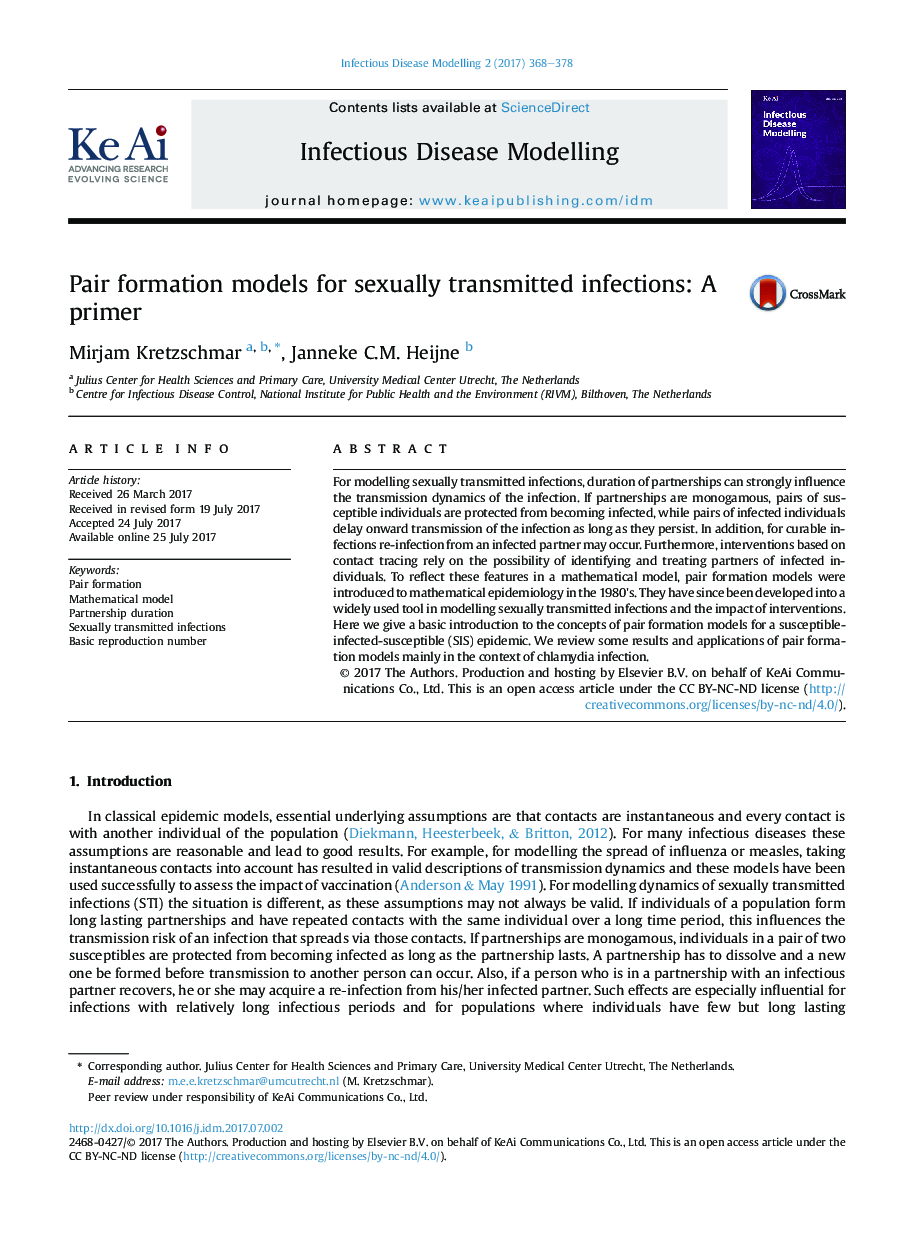| Article ID | Journal | Published Year | Pages | File Type |
|---|---|---|---|---|
| 5662868 | Infectious Disease Modelling | 2017 | 11 Pages |
For modelling sexually transmitted infections, duration of partnerships can strongly influence the transmission dynamics of the infection. If partnerships are monogamous, pairs of susceptible individuals are protected from becoming infected, while pairs of infected individuals delay onward transmission of the infection as long as they persist. In addition, for curable infections re-infection from an infected partner may occur. Furthermore, interventions based on contact tracing rely on the possibility of identifying and treating partners of infected individuals. To reflect these features in a mathematical model, pair formation models were introduced to mathematical epidemiology in the 1980's. They have since been developed into a widely used tool in modelling sexually transmitted infections and the impact of interventions. Here we give a basic introduction to the concepts of pair formation models for a susceptible-infected-susceptible (SIS) epidemic. We review some results and applications of pair formation models mainly in the context of chlamydia infection.
